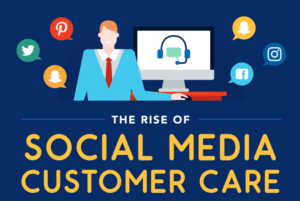Community management on social media refers to the process of building and engaging with a community of followers and users on various social media platforms. It involves understanding the needs and preferences of community members, creating and curating appropriate content, and fostering a sense of belonging and active participation within the community. Effective community management is essential for brands and businesses to establish a loyal customer base, drive brand advocacy, and create a positive online reputation.

Understanding Community Management Strategy and community management on social media
A community management strategy is a comprehensive plan that outlines the approach and tactics for managing a community effectively on social media platforms. It encompasses various components and best practices to ensure the success of community management efforts.
Components of an Effective Community Management Strategy
An effective community management strategy comprises several key components, including:
- Social Listening: Monitoring and analyzing social mentions, conversations, and trends to gain insights into community members’ sentiments and interests.
- Content Creation: Developing compelling and relevant social media content to engage and resonate with the community.
- Engagement Guidelines: Establishing clear guidelines for engaging with community members and addressing their queries, feedback, and concerns.
- Community Guidelines: Setting forth rules and expectations for community behavior and interactions to maintain a positive and inclusive environment.
Types of Community Management Strategies
There are various types of community management strategies tailored to different objectives and community types, including:
- Brand Advocacy: Building a community of brand advocates and enthusiasts who actively promote and support the brand and its products or services.
- User-Generated Content: Creating a community centered around user-generated content, where community members contribute and share their experiences, creativity, and opinions.
- Social Media Platform Strategies: Implementing specific strategies for managing communities on different social media platforms, considering their unique features and user demographics.
Best Practices for Community Management
Implementing best practices is crucial for managing a thriving community on social media. Some best practices include:
- Consistent Engagement: Engaging with community members regularly to foster meaningful interactions and strengthen the community bond.
- Personalized Communication: Addressing community members by their names and customizing communication based on their preferences and behaviors.
- Empowering Advocacy: Encouraging and empowering community members to become brand advocates and ambassadors through incentives and recognition.
- Conflict Resolution: Resolving conflicts and disputes within the community diplomatically and transparently to maintain harmony and trust.
Managing Different Types of Online Communities
Community managers are tasked with managing diverse types of online communities, each with its unique dynamics and goals. Here are some common types of communities and strategies for effective community management.
Building a Community for Brand Advocates
For brand advocacy, the community manager focuses on nurturing and mobilizing a group of passionate brand supporters who actively endorse and advocate for the brand. This involves recognizing and rewarding loyal customers, providing them with exclusive perks, and creating platforms for them to share their positive experiences and testimonials.
Creating a Community for User-Generated Content
A user-generated content community revolves around community members contributing and sharing their content, experiences, and creativity. The community manager facilitates and encourages user participation, showcases user-generated content, and fosters a collaborative environment where members feel valued and influential.
Strategies for Managing Communities on Different Social Media Platforms
Each social media platform requires unique strategies for effective community management. The community manager tailors the approach based on the platform’s features, algorithms, and audience preferences. For instance, visual content may perform well on Instagram, while informative articles may resonate better on LinkedIn.
Utilizing Social Media for Community Engagement
Social media serves as a powerful tool for community engagement, allowing brands to connect with their audience, gather feedback, and build lasting relationships. Here are some essential aspects of leveraging social media for community engagement.

Social Listening and Its Role in Community Management
Social listening involves monitoring and analyzing conversations, mentions, and sentiment around the brand and industry. It provides valuable insights into community preferences, pain points, and emergent trends, enabling the community manager to tailor content and engagement strategies effectively.
Creating Compelling Social Media Content for Community Engagement
Compelling content lies at the heart of community engagement. The community manager crafts and shares relevant, informative, and captivating content to stimulate discussions, prompt reactions, and keep the community members invested and active.
Engaging with Community Members to Build Brand Advocacy
Engagement efforts revolve around fostering two-way interactions with community members, acknowledging their contributions, and nurturing a sense of belonging. Through active engagement, community managers lay the foundation for brand advocacy and sustainable community growth.
Tools and Strategies for Effective Community Management
Utilizing the right tools and implementing well-thought-out strategies is imperative for successful community management on social media. Community managers leverage various resources and tactics to streamline their efforts and achieve meaningful results.
Choosing the Right Community Management Tools
Community management tools automate and simplify tasks such as scheduling posts, monitoring conversations, and analyzing performance metrics. Tools like Hootsuite, Buffer, and Sprout Social empower community managers to manage social media accounts efficiently and gather actionable insights for informed decisions.
Implementing Marketing Strategies to Foster Community Growth
Integrating marketing strategies within community management initiatives enables brands to nurture and expand their communities organically. This can include leveraging user-generated content for promotional activities, running community-exclusive campaigns, and collaborating with influencers to amplify community reach and impact.
Investing in Community Management for Brand Awareness
Community management plays a pivotal role in enhancing brand awareness and perception. By consistently engaging with community members, sharing valuable content, and upholding brand values, community managers contribute to building a positive brand image and fostering trust among social media users.
The Role of a Community Manager in Social Media
A community manager serves as the linchpin of community management efforts on social media, orchestrating activities, facilitating interactions, and maintaining a vibrant and engaged community. Understanding the key responsibilities and strategies for a successful community management approach is essential for community managers.
Key Responsibilities of a Community Manager

The responsibilities of a community manager encompass:
- Moderating and Managing Community Interactions: Overseeing community discussions, addressing queries, and ensuring adherence to community guidelines.
- Content Curation and Creation: Developing and sharing engaging content that resonates with the community’s interests and values.
- Performance Analysis: Monitoring and analyzing community engagement metrics to gauge the impact of community management efforts and make data-driven optimizations.
Building Strong Communities through Effective Community Management Efforts
By executing effective community management initiatives, community managers contribute to cultivating inclusive, supportive, and engaged communities that advocate for the brand and foster meaningful connections among the community members.
Creating a Successful Community Management Strategy
A successful community management strategy entails aligning community building efforts with brand objectives, adapting to evolving community needs, and staying attuned to the pulse of the community. Community managers continually refine their strategies to nurture a dynamic and successful community on social media.
5 keys to building a community management strategy
To help you devise a successful community management strategy, it’s important that you have a well-defined goal. That’s why we will discuss the five key stages of social media community management and help you to develop appropriate tactics for each stage.
1. Acquisition
Marketers often don’t think of community management as part of their acquisition model, or sometimes the community management team can be disconnected from the parts of marketing that are driving business generation. This shouldn’t be the case.

Think of your existing community as the cornerstone of your marketing campaigns and likely the first ones to convert. The most loyal community followers can help elevate awareness for your brand, and earn additional media space.
From brand awareness and consideration to conversion, marketers can have a ready strategy in place to ensure that they reach their community all along the buyer’s journey. Plus, the community management team needs to be far more integrated into the business acquisition model.
Best practices
Here are steps to improve your customer acquisition efforts in your community management strategy:
- Be ready with a social media community management strategy as campaigns unfold, and label your customer queries to reflect each business funnel stage.
- Customize queries and expertise levels based on customer journey stages and leverage community feedback for campaigns and content.
- While performance metrics paint the efficiency picture, you can also validate your marketing effectiveness through community engagement.
Did one part of your campaign get audiences talking more than others? Be sure to listen to what your community has to say.
2. Social customer care
More than ever, companies realize the potential of using social media channels for consumer-brand interactions.
We now have the ability to listen, monitor and analyze audience behavior, gain consumer feedback, and improve existing relationships.

Customer expectations have changed too. Our social media communities now expect lightning-fast responses. Emplifi research reveals 52% of consumers expect to receive a response to their questions within an hour, with 32% expecting to hear back within 30 minutes. Yet about 20% of consumers report that they typically have to wait at least 24 hours to receive a response.
Best practices
Here are steps to improve social customer care efforts around your community management strategy:
- In order not to miss any important mentions or conversations, monitor all relevant queries and mentions, hashtags, posts from fans and followers on your owned profiles, and respond to them as quickly as possible. Unanswered complaints or questions can harm your brand’s reputation and strengthen the voice of unsatisfied customers.
- Your community comprises people that are at different stages of the customer journey. Therefore, it’s important to remember that social customer care is not only related to existing customers. The customer care you provide today can influence whether a potential customer will make a purchase tomorrow.
- Log every interaction with as much detail as possible into your customer care knowledge base – time, date, social platform, response time, customer care agent, type of interaction, etc. – so that the next time the same person contacts your brand for any reason, you can return to your previous conversation and retrieve the entire history instantly.
- Introduce chatbots into your community engagement workflows. AI chatbots are used increasingly, as customers turn to social channels for near-instant brand engagement.
This technology can help overwhelmed customer care teams process similar queries coming from the community and increase response times while also handling conversations 24/7, which is exactly what consumers expect from modern social customer care.
Brand example
Today, customers expect the entire brand experience to take place on the channels they’re most familiar with. The days of switching from platform to platform to interact with a particular business are fast disappearing.
“Wherever and however our guests want to communicate, we want to be there for the guest,” said Alex Bresette, Director of Guest Relations for Dine Brands. “Whether they’re looking for a warm, empathetic engagement on the phone, or to discuss through a social channel, Emplifi enables our team to provide that for our guests.”
With Emplifi, the Dine Brands Guest Relations team has been able to reduce their average handle time on social cases from five minutes to only one. Read the full story
3. Crisis management
One aspect of community management that requires strategic planning ahead of time is crisis management.

If an issue arises and spreads across social media, it can cause immense damage to a brand’s reputation if it’s not handled in a timely and strategic manner. Problems can stem from in-store promotions to TV campaigns, unanswered social mentions to delivery issues. Teams need to have a plan and tools in place that let them spot such crises quickly and handle them instantly.
Best practices
Here are steps to improve crisis management for social efforts around your community management strategy:
- Team coordination, product knowledge, and leadership are key. Determine who your social media team can reach out to if they come across difficult questions to answer.
- Be proactive, have an established crisis management plan with defined tasks and responsibilities, so if a crisis hits, you’re already prepared.
- The internal team organization for crisis management and customer care should facilitate the process of attending to negative comments. They should also be able to identify a crisis as a brand advocacy opportunity. Many complaints and negative mentions can be turned around if the brand and the social media team are prepared and can act swiftly.
In any crisis situation, it’s paramount to monitor brand sentiment. The goal for the team managing the crisis is to ensure negative sentiment doesn’t snowball out of control. While the community management team should be addressing comments as efficiently as possible, it’s key that the overall sentiment is monitored in parallel.
4. Retention
As social communities grow, brands face new challenges of creating content that keeps their audience engaged. Not to mention, there’s so much competition for attention on social media feeds; a large community can become uninterested and, over time, disengage with a brand’s content.

So how do you keep them continuously interested in your brand even after purchase?
Best practices
Here are steps to improve retention efforts around your community management strategy:
- Monitor the topics and themes you’ve been exploring in the past year to make sure you’re not being repetitive. Save every content piece your audience loves into a content collection – this will make reviewing content with your team and coming up with fresh ideas so much easier.
- Another tactical idea is to target your community based on where they are in their customer journey. Create targeted campaigns to offer rewards for those community members you fear may be close to disengaging or, vice versa, you can aim to target those that engaged most recently.
- We mentioned this earlier, but don’t forget to include your most loyal fans when creating new campaigns. Try getting them to test out new products before you market to wider audiences, or give them early access or a premium version of your service.
- Offer rewards, discounts, or specially created products to show your appreciation. This can be a great opportunity to turn fans into brand ambassadors! Which leads us to our next point.
5. Advocacy
The last phase of community management is to identify and engage with super fans and brand advocates. This phase validates a job well done for the brand, from product conception to community care.

Social media makes it possible to identify super fans, potential brand ambassadors, or micro-influencers within your community. This is especially easy if you are using social media analytics tools that can help you identify those community members who engage with your content the most or leave the most positive brand mentions.
The takeaway
For each phase of social media community management, it’s important to pay close attention to how your audience responds to your efforts and learn from past mistakes. A good all-around best practice for community management is to maintain a knowledge base of what has worked – and what hasn’t – so it can serve as training material for new social media team members.
It should include the details of customer interactions within social platforms, detailing the date, social platform, issue addressed, the name of the social member who addressed the problem, the name of the customer and CRM identification number with a link to their profile, and finally information on how or if the issue was resolved.
Then tag each “ticket” and classify it as positive, negative, crisis, advocacy and, whenever possible, link with the content in which the issue was started – whether it was an ad, a link, or a product offer. The tagging will allow future team members to understand what was done in the past with regard to specific issues, while managers will be able to understand where their issues are arising from.
As new social features become available on each platform, make sure your brand is ready to embrace them. Ensure that these new features are appropriate for your social strategy and what objectives can be achieved with them. Involve members of your social media team to draw the guidelines for managing the community with each feature and be prepared to deal with a crisis in every format on every platform.
And one last tip – it’s easier when your community is managed all in one place.



